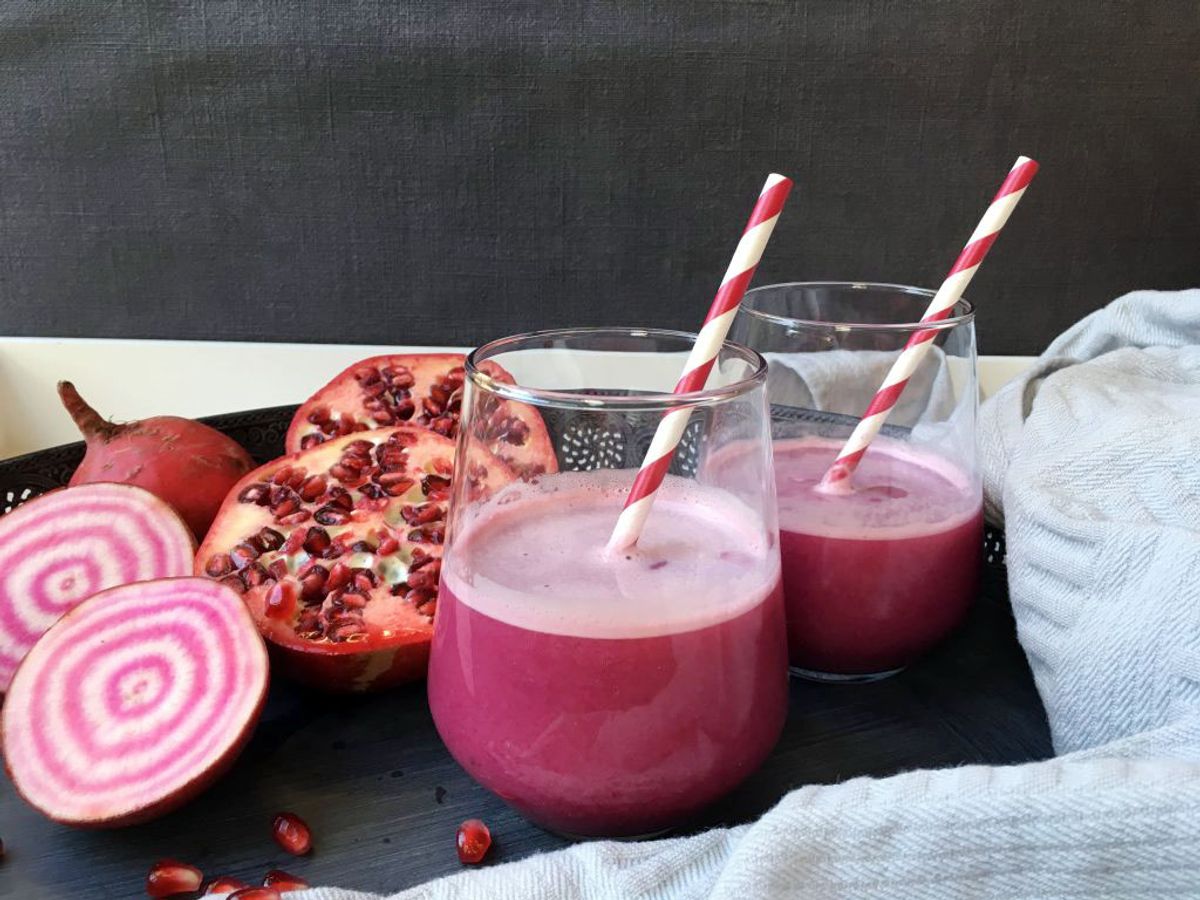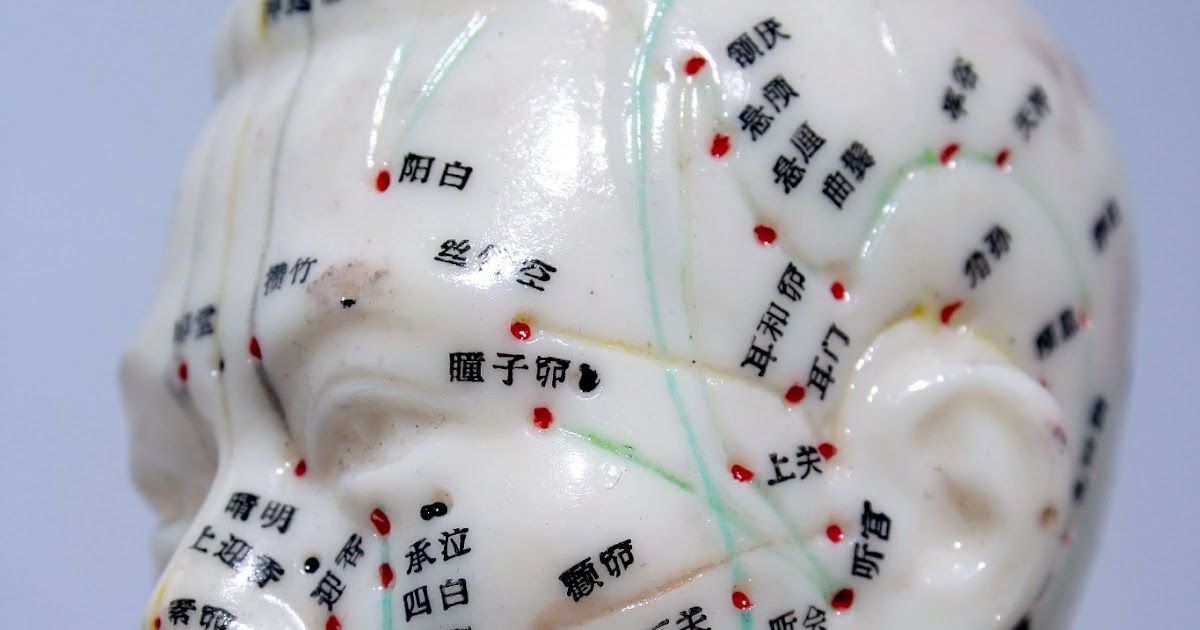
Eat to Beat Inflammation: Crafting Your Anti-Inflammatory Diet Plan
Inflammation: The Silent Troublemaker

Understanding Chronic vs. Acute Inflammation
Inflammation isn't always the bad guy; in fact, it's your body's natural defense mechanism. Think of acute inflammation as your body's first responder to injury or infection. This short-term inflammation is characterized by redness, warmth, swelling, and sometimes pain. It's your body's way of saying, 'Hey, something's not right here,' and it's a crucial part of the healing process.
Chronic inflammation, on the other hand, is like a false alarm that never stops ringing. It's low-grade and persistent, often flying under the radar without the obvious signs that come with acute inflammation. Over time, this type of inflammation can contribute to a host of health issues, from arthritis to heart disease, and yes, even to the way your body processes food.
Inflammation can be influenced by a myriad of factors, but your diet plays a starring role. Here's a quick rundown of how different foods can impact your inflammatory status:
- Pro-inflammatory foods: These are the usual suspects like processed foods, sugary treats, and excessive alcohol.
- Anti-inflammatory foods: Think colorful fruits, leafy greens, and omega-3 rich fish.
Remember, the goal isn't to eliminate inflammation completely but to keep it in balance. Chronic inflammation is a sneaky troublemaker, but with the right diet, you can keep it in check and support your body's natural defenses.
How Your Diet Influences Inflammation
Ever wonder why some foods leave you feeling like a million bucks, while others make you feel, well, blah? It's all about inflammation, folks. What you eat can either stoke the fires of inflammation or douse them.
Inflammation is like your body's fire alarm system, reacting to unwanted guests like toxins or allergens. But when that alarm keeps ringing—thanks to a diet high in processed foods, sugars, and unhealthy fats—your body's wellness gets smoked out.
By choosing anti-inflammatory foods, you're essentially giving your body a helping hand to extinguish those pesky inflammatory flames.
Here's a quick hit list to get you started:
- Foods to Favor: Fruits, veggies, whole grains, fatty fish, nuts
- Foods to Dodge: Refined carbs, fried foods, soda, red meat
Remember, it's not just about avoiding the bad stuff; it's about embracing the good. So, let's get that anti-inflammatory party started on your plate!
The Link Between Inflammation and Chronic Diseases
It's becoming increasingly clear that chronic inflammation is the root of many evils when it comes to our health. Chronic diseases, ranging from heart disease to diabetes, have been linked to persistent inflammation. It's like a silent alarm that never shuts off, signaling trouble throughout the body and contributing to disease progression.
Inflammation isn't just a buzzword; it's a biological response that can go awry. When it becomes chronic, it's like a low-grade fire that can slowly damage tissues over time. Here's how it connects to some major chronic diseases:
- Heart Disease: Inflammation contributes to plaque buildup in arteries.
- Diabetes: It affects insulin sensitivity and glucose metabolism.
- Arthritis: Inflamed joints lead to pain and decreased mobility.
- Cancer: Chronic inflammation can lead to DNA damage and cancer growth.
Remember, the goal isn't to eliminate inflammation completely – it's a vital part of our immune response. The aim is to keep it in check and prevent it from overstaying its welcome.
By understanding this connection, we can better appreciate the power of an anti-inflammatory diet. It's not just about what we eat; it's about nurturing a state of balance that supports our long-term health.
The Anti-Inflammatory Diet Basics

Foods to Favor: Your Anti-Inflammatory Heroes
When it comes to fighting inflammation, not all foods are created equal. Some pack a powerful punch in keeping those inflammatory responses in check. Let's dive into the heroes of the anti-inflammatory diet.
- Omega-3 rich fish: Think salmon, mackerel, and sardines. These swimmers are loaded with anti-inflammatory fats that your body will thank you for.
- Leafy greens: Spinach, kale, and Swiss chard are like the superheroes of the vegetable world, full of antioxidants and phytonutrients.
- Berries: Blueberries, strawberries, and raspberries aren't just tasty—they're also bursting with vitamins and anti-inflammatory properties.
- Nuts and seeds: Almonds, walnuts, flaxseeds, and chia seeds are not just for birds; they're nutrient-dense snacks that help reduce inflammation.
Remember, incorporating a variety of these foods into your diet can help keep inflammation at bay and your health in tip-top shape.
It's not just about adding the good stuff, though. It's also about creating a balance that works for your body and lifestyle. Start small, maybe by throwing some extra berries into your morning oatmeal or swapping out that bag of chips for a handful of almonds. Your body—and taste buds—will start to notice the difference!
Foods to Avoid: The Inflammatory Villains
While we've talked about the superheroes of the anti-inflammatory diet, it's just as crucial to know the baddies. Steer clear of processed foods and sugars, which can kick inflammation into overdrive. Think of them as the archenemies to your well-being.
Trans fats and refined carbohydrates are notorious for their inflammatory effects. They're often lurking in the most tempting of treats, but giving them a wide berth can make a huge difference in how you feel.
Remember, moderation is key. It's not about cutting out everything you love, but rather about making smarter choices more often.
Here's a quick hit list of inflammatory culprits to keep on your radar:
- Processed meats like sausages and deli slices
- Fried foods that promise crunch but deliver consequences
- Sugary beverages that are more villainous than refreshing
- White bread and pastries that offer empty calories and discomfort
By keeping these foods to a minimum, you're setting the stage for a happier, healthier you.
Balancing Macronutrients for Optimal Health
Getting your macronutrient balance right is crucial for an anti-inflammatory diet. Carbohydrates, proteins, and fats are all important, but it's the quality and type that matter most. For instance, opting for complex carbs like whole grains can help reduce inflammation, while processed carbs can do the opposite.
Fats should not be feared, but embraced – the healthy ones, that is. Monounsaturated and omega-3 fatty acids are your allies in fighting inflammation. Here's a quick rundown of what to include:
- Carbohydrates: Whole grains, fruits, vegetables
- Proteins: Lean meats, fish, legumes
- Fats: Olive oil, avocados, nuts, seeds
Remember, balance is key. You don't have to eliminate macronutrients, just choose the right types and proportions.
Protein is particularly important for repairing tissues and keeping your immune system strong. But too much can be pro-inflammatory. Aim for a variety of sources, and remember that plant-based proteins can be just as effective as animal sources. Adjust your intake according to your activity level and health goals.
Delicious and Nutritious: Meal Planning Made Easy

Sample Meal Plans to Kickstart Your Journey
Embarking on an anti-inflammatory diet doesn't have to be a chore. In fact, it can be a delicious adventure! Let's dive into a day's worth of meals that'll have you feeling great and loving what you eat.
For breakfast, think about a smoothie bowl packed with berries, spinach, and a scoop of plant-based protein. Berries are your anti-inflammatory heroes here, bursting with antioxidants.
Lunch could be a vibrant salad with mixed greens, cherry tomatoes, avocado, and grilled salmon. Drizzle with a homemade dressing of olive oil and lemon juice for an extra zing.
Dinner is where you can really get creative. How about a stir-fry with colorful veggies and tofu or chicken? Use spices like turmeric and ginger to amp up both the flavor and the anti-inflammatory benefits.
Remember, the key is to include a variety of foods in your diet. Here's a quick list of anti-inflammatory staples to always have on hand:
- Leafy greens (spinach, kale, Swiss chard)
- Fatty fish (salmon, mackerel, sardines)
- Whole grains (brown rice, quinoa)
- Nuts and seeds (almonds, flaxseeds)
- Fruits (especially berries and cherries)
With these meal ideas, you're well on your way to reducing inflammation and enjoying your meals to the fullest!
Snack Ideas That Fight Inflammation
When the munchies hit, it's easy to reach for something quick and comforting. But what if your go-to snack could also help combat inflammation? Incorporating anti-inflammatory foods into your snack time is simpler than you might think.
Almonds, walnuts, and other nuts are packed with anti-inflammatory omega-3 fatty acids. Pair them with slices of antioxidant-rich apples or berries for a satisfying crunch and a burst of sweetness. Here's a quick list of snack ideas that are as delicious as they are beneficial for your health:
- Greek yogurt with a drizzle of honey and a sprinkle of chia seeds
- Carrot and celery sticks with hummus
- A smoothie with spinach, pineapple, and flaxseeds
- Sliced cucumber topped with avocado and a pinch of sea salt
Remember, the key to a successful anti-inflammatory diet is variety and balance. Don't be afraid to mix and match these snacks to keep things interesting and your body thriving.
Prepping Your Kitchen for Success
Transforming your kitchen into an anti-inflammatory haven doesn't have to be a daunting task. Start by clearing out the pantry and fridge of those inflammatory culprits like processed snacks and sugary drinks. Make room for the good stuff! Next, stock up on essentials that support your new diet plan.
Essentials for Your Anti-Inflammatory Kitchen:
- Fresh fruits and vegetables
- Whole grains like quinoa and brown rice
- Healthy fats, such as avocados and extra virgin olive oil
- Lean proteins like chicken breast and wild-caught salmon
- Nuts, seeds, and legumes
Remember, organization is key. Use clear containers for easy access and visibility. Label everything, so you know exactly what you have, making meal prep a breeze.
Finally, invest in some quality kitchen tools that will make cooking enjoyable and efficient. A good knife set, a blender for smoothies, and airtight containers for meal prep can go a long way. With these steps, you'll be well on your way to creating nutritious meals that help keep inflammation at bay.
Herbs and Spices: The Secret Weapons in Your Pantry

Turmeric, Ginger, and Beyond: Nature's Anti-Inflammatory Powerhouses
Ever wonder why so many health enthusiasts rave about golden milk and ginger tea? It's because turmeric and ginger are like the superheroes of the spice world when it comes to fighting inflammation. Curcumin, the active compound in turmeric, has been shown to have potent anti-inflammatory properties, rivaling some pharmaceuticals without the side effects.
Ginger, another root with a zesty kick, is not just great for adding flavor to dishes; it's also packed with gingerol, a substance with powerful anti-inflammatory and antioxidant effects. Together, these spices can make a significant impact on your health.
- Turmeric: Best known for its role in curry, it can also be added to soups, smoothies, and teas.
- Ginger: Fresh or dried, it's perfect in stir-fries, desserts, and, of course, teas.
- Cinnamon: Not just for desserts, it can be sprinkled on oatmeal or added to coffee.
- Cayenne: Adds a spicy kick to any dish and boosts your metabolism.
Remember, it's not just about adding a dash of spice here and there; it's about making these ingredients a regular part of your diet to reap the long-term anti-inflammatory benefits.
Incorporating Herbs and Spices into Everyday Meals
Spicing up your meals isn't just about flavor—it's a health move, too! Herbs and spices are the unsung heroes of the anti-inflammatory diet, packed with antioxidants that can help reduce inflammation. But how do you make them a staple in your kitchen? It's easier than you think!
Start with the basics. Incorporate herbs like basil, oregano, and thyme into your pasta sauces or salad dressings. Spices such as cinnamon can be a warm addition to your morning oatmeal or smoothie. Here's a quick guide to get you going:
- Basil: Toss it in salads or on top of pizzas.
- Cinnamon: Sprinkle on sweet potatoes or mix into yogurt.
- Turmeric: Stir into curries or blend into soups.
Remember, fresh herbs often have a more vibrant flavor, but dried versions can be just as beneficial. The key is to use them regularly and generously.
Balancing flavors can be tricky, but don't be afraid to experiment. A pinch of cumin might be the secret ingredient your chili has been missing. And let's not forget about teas and tonics—adding a slice of ginger or a dash of turmeric to your tea can turn it into an anti-inflammatory elixir. Keep playing with combinations until you find what tickles your taste buds and soothes your body.
Creating Flavorful and Healing Teas and Tonics
Unlock the full potential of your pantry with the art of brewing healing teas and crafting tonics that do more than just please your palate. Incorporating anti-inflammatory herbs and spices into your daily routine can be a game-changer for your health.
- Start with a base of green or herbal tea.
- Add a pinch of turmeric or ginger for their potent anti-inflammatory properties.
- Sweeten with a touch of honey or stevia if needed.
- Enhance with a squeeze of lemon or a dash of cinnamon for an extra flavor kick.
Remember, the key to these beverages is consistency. Sipping on a turmeric tea or a ginger tonic regularly can help keep inflammation at bay.
Creating these beverages is not just about mixing ingredients; it's about finding the right balance for your taste and health. Experiment with different combinations and ratios to discover what works best for you. And don't forget, staying hydrated is crucial, so make these teas and tonics a part of your daily fluid intake.
Staying on Track: Tips and Tricks for Long-Term Success

Mindful Eating: Listening to Your Body's Signals
Tuning into your body's signals is a cornerstone of mindful eating. It's about recognizing the difference between true hunger and emotional cravings. Listen to your body's hunger cues and learn to stop eating when you're comfortably full, not stuffed.
Hunger isn't just felt in your stomach; it can manifest as fatigue, irritability, or a lack of concentration. Here's a simple guide to help you identify your body's signals:
- Stomach Growling: The classic sign you need to eat.
- Energy Levels: Low energy might mean your body needs fuel.
- Mood: Feeling unusually irritable can be a hunger cue.
- Concentration: Difficulty focusing can indicate it's time for a meal.
Remember, mindful eating is not about strict rules or diets; it's about being present with your food, savoring each bite, and honoring your body's needs.
By paying attention to these signals, you can avoid overeating and make choices that support your anti-inflammatory diet. It's a practice that gets easier with time, so be patient with yourself as you learn to eat mindfully.
Navigating Social Events and Dining Out
Heading out to a party or a dinner can feel like navigating a minefield when you're on an anti-inflammatory diet. But fear not! With a bit of planning and some savvy strategies, you can stick to your health goals without feeling like a social hermit. Always have a game plan before you go. Know the menu, pick your dishes in advance, or even call ahead to see if the restaurant can accommodate your dietary needs.
Socializing doesn't have to mean compromising on your diet. Here's a quick checklist to keep you on track:
- Offer to bring a dish to share that meets your dietary guidelines.
- Focus on lean proteins and veggies if you're unsure about the menu.
- Don't be shy about asking how food is prepared.
- Stay hydrated with water or herbal teas to avoid mindless snacking.
Remember, it's about balance and making informed choices, not about perfection. You can enjoy the company of friends and family while still honoring your health commitments.
Adjusting Your Diet as Your Needs Change
Life's a journey, and so is your health. As you age, your body's needs can shift, and what worked for you in the past might not be the best fit anymore. It's crucial to listen to your body and adjust your diet accordingly.
Flexibility is your friend when it comes to maintaining an anti-inflammatory diet over the long haul. Here are a few pointers to keep in mind:
- Pay attention to how different foods make you feel and adjust your intake as needed.
- Keep track of any new symptoms or health conditions and consult with a healthcare professional to tailor your diet.
- Remember that dietary needs can change with activity levels, stress, and other lifestyle factors.
It's not about sticking to a rigid plan, but rather evolving your diet to meet your changing needs.
Don't be afraid to experiment with new foods and recipes that align with your current health goals. Staying informed and making small tweaks can make a big difference in how you feel.


